This episode, we travel to a future where your romantic partners aren’t chosen by questions or swipes, but rather by your brainwaves.
This future is based on an idea from Shelly Ronan and Ernesto D. Morales and their project Object Solutions. If you liked what you heard about Object Solutions you should check out their other work, and their Patreon page.
I also talked to Suzanne Dikker, who has used EEG headsets to study everything from education, to Marina Abramovic’s art, to compatability.
And to get a true expert position on dating apps, I talked to Andrea Silenzi from the podcast Why Oh Why. If you’re interested in the intersection between sex, dating, relationships and technology, check out her show.
Other things to read:
- The Mutual Wave Project by Suzanne Dikker
- ‘EEG Dating’ matches people based on their brainwave data
- This Tinder Hands-Free App Makes Dating Decisions by Reading Heartbeats
- This Tinder-Swiping Biometric Love Robot Knows Who Your Body Wants
Flash Forward is produced by me, Rose Eveleth. The intro music is by Asura and the outtro music is by Hussalonia. The episode art is by Matt Lubchansky. By the way, check out Matt’s new animated web series over at Topic.
If you want to suggest a future we should take on, send us a note on Twitter, Facebook or by email at info@flashforwardpod.com. I love hearing your ideas! And if you think you’ve spotted one of the little references I’ve hidden in the episode, email us there too. If you’re right, I’ll send you something cool.
And if you want to support the show, there are a few ways you can do that too! We have a Patreon page, where you can donate to the show. But if that’s not in the cards for you, you can head to Apple Podcasts and leave us a nice review or just tell your friends about us. Those things really do help.
That’s all for this future, come back next month and we’ll travel to a new one.
▹▹▹▹▹▹▹▹▹▹▹▹▹▹▹▹▹▹▹▹▹▹▹▹▹▹▹▹▹▹▹▹▹▹▹▹▹▹▹▹▹▹▹▹▹▹▹▹▹▹▹▹▹▹▹▹▹▹▹▹▹▹▹▹▹▹
TRANSCRIPT
Rose: Hello and welcome to Flash Forward! I’m Rose and I’m your host. Flash Forward is a show about the future. Every episode we take on a specific possible… or not so possible future scenario. We always start with a little field trip to the future, to check out what’s going on, and then we teleport back to today to talk to experts about how that world we just heard might really go down.
Before we go to the future this week, I want to tell you about a podcast that I really love, and think you all might like too! It’s called Imaginary Worlds and it’s a show about how sci-fi and fantasy worlds are created, and why we suspend our disbelief. Some of the episodes have been about…
> How the residents of the real towns where Twin Peaks was filmed feel about the show and how the show gave their community a strange new identity
> Whether the Death Star was too big to fail and blowing it up would’ve plunged the galaxy into economic chaos.
> Which is more believable in fantasy films, computer generated characters or Jim Henson style puppets?
Host Eric Molinsky talks with filmmakers, comic book artists, novelists, video game designers, LARPers, Cosplayers, and on rare occasions — a pair of vampires, Captain Hook, and even the brain of HP Lovecraft. You can download Imaginary Worlds where ever you get your podcasts, or go to imaginary worlds podcast dot org.
Okay, let’s go to the our imaginary future world! This time, we’re starting in the year 2020.
Soothing voice: Object solutions.
Welcome to a world of problems, solved.
Finding a compatible partner is a task like no other. The first date dinner table is loaded with a lifetime of romantic pressures. Will your expectant family members be satisfied by the stranger that sits before you. Will your own reality live up to your television fantasies. You and your date split an appetizer amidst the torments of mutual scrutiny and speculation.
What if there were no expectation to be so vigilant engaged or even awake.
What if instead your success as a couple were determined by manipulated brainwaves guided by the invisible hand of Big Data.
The NeurAlign brings this methodology into the often inefficient realm of courtship. The system orchestrates your romantic success while the two of you sleep soundly at the first date dinner table. Served on a silver platter, the NeurAlign central module and electrode cables are reminiscent of a vibrant appetizer. Once you drift off our laboratory and untangle both your brains and a collective neural network and choreograph a controlled experiment of your connective potential. Gentle probes send electrical impulses through your nervous systems to fabricate your actual experiences together. The NeurAlign runs the gamut of evocative variables to find your most efficient path to love. Testing trillions of days in the park, intimate times in every bedroom of the world, unbelievable gains and losses. The system takes diligent notes on how your brains react. If the NeurAlign detects a deal breaker, it decides to truncate the doomed relationship, leaving a package of tasteful memories and installing hormonal barriers that block future attraction. When you disconnect, you can shake hands and simply walk away. If your merger is approved, the NeurAlign encodes a compelling neural narrative using your most successful plot points from the test. It triggers irresistible chemical releases and forges indisputable memories that will follow you for a lifetime together. When you wake, your first day it is actually your 30th. So bring on the main course. The NeurAlign fast forwards through the insecurities of early love.
Your nervous systems are now calibrated to reflect your compatibility. Distilled to its neural essence, the first day it becomes an algorithmic dance of romantic possibility.
In a fraction of the Standard Time.
Rose: Okay, so in this episode we’re traveling to a future where you find potential romantic partners using a machine that reads your brainwaves. So you and a potential partner would sit down, and you would each put on a headset. And the app would tell you if you’re a match, based on what’s going on in your brains. And if you are a match, it then goes on to implant memories into your brain so that you can get past all the messy, awkward early date stuff and into the fully romantic relationship that will ostensibly last forever.
This future actually comes from the person whose voice you heard in the intro. He is one of the two people behind a design fiction project called Object Solutions.
Ernesto de Morales: I’m Ernesto de Morales. I’m the Chief Executive Officer and Chief Laboratorian of Object Solutions. And in real life I am an artist and designer running my own design practice, Studio Malagón.
The other half of Object Solutions is Shelly Ronan.
Shelly Ronen: So I’m Shelley Ronen and I’m the Chief Scientific Officer of Object Solutions. But in real life I am a doctoral candidate of sociology at New York University.
Ernesto: Shelly and I met while working on a real pitch for innovative scent technologies at a product development company and…
Shelly: It was the future of fragrances, just to be clear
Ernesto: So it was a natural transition for us to now work on creating these sleek presentations for Object Solutions as a corporation. I have a background in marketing and design, and so for me, I bring those skills to the project and create these sales pitches, advertisements, this corporate jargon.
Rose: Together, Shelly and Ernesto imagine and design fictitious future devices like the NeurAlign. And they even do presentations in character. Here’s how Shelly presents Object Solutions in her role as the Chief Scientific Officer.
Shelly: My name is Shirley Ronen and I’m the Chief Scientific Officer of Object Solutions. The Love, Optimized series is just one of several of our exciting endeavors. But this one is really unique in that it tackles some of the oldest and most intimate problems. You’ll see that our Laboratorians have worked very hard to offer a handful of truly unique products that navigate the challenges of romance, sex, and love. We branded this line Love, Optimized to express our intention in maximizing the efficiency of this age old aspect of human existence. That is, our irrational capacity to feel, to seek closeness with others, and to indulge in desire. And we want nothing to get in the way. But our series name expresses something else, as well. It captures the truly private encounter we intend you as users to have with love. The series title Love, Optimized reads as the end of a letter the end of a tender note from a sweet heart. Your sweet heart speaks through our series, permitting the very closest of rendezvouses with them. Given this, our role as inventors, as manufacturers, as agents of the outside world, falls away from your intact experience of love. As you familiarize yourself with our products you’ll see that our guiding principles are made manifest. At Object Solutions, we make specialized inventions for everyday life. We delve into the particulars of everyday life. Consider every day life right now. Each of you lives in a world awash with stimulation. challenges, constant choices. Life is harrowing and science has shown that the excess of choice is tyrannical. From the mundane to the transcendent, we are faced with choices and challenges that bring up everyday points of friction. These frictions are the perfect points of entry for us to do our work at Object Solutions. Focusing on these obstacles, our Laboratorians develop mediations to smooth out the frictions of existence. Whether the problem is how to mitigate the dangers of food hygiene, or how to maximize rest in a world so populated with reasons to stay awake, we at Object Solutions are here to help. But we see our work as doing more than just helping with challenges of today’s world. We are poised on the threshold of the future. Our longer term vision is to turn life into a delicate choreography of specialized inventions. Object Solutions is the logical destination for our current socio-technical trajectories. Taking the approach of incremental problem solving, we will eventually create a seamless patchwork of Object Solutions that will reimagine life in its totality. This is more than a mere feat of design and consumption. This will truly be a courageous new world. It’s a world of problems solved.
Rose: The NeurAlign is one of several objects that Shelly and Ernesto have dreamed up surrounding love. There are also tiny drones that follow your hand around and illuminate your ring finger. And there’s an app that you train so that your partner knows exactly how to please you sexually. I think they are all really delightful, but for today we’re going to focus on the NeurAlign. Which we’re going to consider in two parts. First: using brain waves to match with a partner. And second: implanting memories of that partner.
The first part, using brain waves to match you with a possible significant other, is actually not all that far out. And there is actually a neuroscientist who has built something like this.
Suzanne Dikker: I am Suzanne Dikker, and I am a research scientist at the NYU Department of Psychology and Utrecht University. And I also build interactive art installations in collaboration with Mathias Ostrik, an interactive video artist.
Rose: Suzanne started her project because she wondered what it actually meant when people said they were “on the same wavelength.” Does that mean that our brainwaves are actually in sync?
Suzanne: The question of whether, if we feel like we’re on the same wavelength with another person or we click with this person, also leads to maybe synchronized brain activity between people. And if that level of brain activity synchronization can actually predict things or relates to things, with respect to how engaged we are with each other and how our relationship is crafted.
Rose: To find out, she built a pair of headsets that two people could put on and see how their brainwaves matched up. The headsets use a brainwave measuring system called EEG, short for electroencephalogram.
Suzanne: OK, so EEG. Your brain communicates, there’s neurons in your brain, right. And lots of them, about 80 billion. And they communicate with each other, they send signals to each other, information, and to the rest of your body using chemicals and that’s accompanied by electrical pulses.
The headsets that we use have 14 electrodes, and those electrodes, you can see sort of as as microphones that are trying to listen in to what’s going on inside your brain. And they’re trying to listen to those brainwaves that we know are somehow associated with the way that we perceive the world.
Rose: So two people put on these caps, and the caps measure electrical pulses coming from their brains. And if those pulses match up, you can say you’re in sync.
Suzanne: Synchrony is like kind of an umbrella term for a lot of different ways of looking at brain data. Do your brainwaves look the same at a millisecond time scale? Or are you generally in the same state of mind right now? Are we both paying attention, or are we both emotionally moved by what we’re looking at? That is also seeing a meaningful way of synchrony. But we’re looking more at the time scale. Do our rhythms of our brains adapt to each other as a function of how much we like each other or how engaged we are with each other?
Rose: This is a pretty crude measurement. The caps can’t tell you what you’re thinking, or what you like, or your deepest darkest thoughts. And just because two brains are putting out similar electrical pulses, doesn’t really mean that those two people who possess those brains are destined to be in love forever. But Suzanne’s work does show that people who know each other better, are more likely to be in sync.
Suzanne: We find that there is a correlation between people’s relationship, and especially people’s perceived nature of the relationship – how close they feel to each other more that then how long they’ve known each other – predict how in sync their brain waves are. How similar the shape of their brain activity is.
Rose: Suzanne has used these EEG headsets in all kinds of settings, from measuring how in sync students are, to measuring how in sync the artist Marina Abramovic is with the people who sit across from her. She’s also built this big installation called the Mutual Wave Machine.
Suzanne: Two people go inside it ,and they sit opposite each other, and they’re in a dome like environment. So they’re kind of in a round space. And then they’re surrounded by this audio visual reflection of their brainwave synchrony. When they see no light there is no synchrony. And this is usually in a very dark space, so you are in a dark environment. And then when there was more synchrony the light expands, there’s these light patterns that kind of reach out to each other from behind the two participants. And this kind of alludes to how you can sometimes feel infinitely more lonely when you’re in the presence of somebody and you’re trying to connect and it’s not working. That’s the darkness. And then how exhilarated you can feel when that attempt of connecting is successful, like the light expanding to each other. And then the light patterns also reach into each other, filling the entire space. That kind of refers to, if you feel connected to somebody, it feels like you are together, more than the sum of the two of you. Or less different.
Rose: That said, Suzanne doesn’t think that you should use her EEG caps as an actual test for compatibility.
Suzanne: Compatible is… I think it’s a little dangerous to frame it that way. But, in terms of measuring compatibility, we can’t turn this around. This is an inference that you can’t reverse, right. So to explain, you have this scatterplot with lots of dots. And you can draw a line through it and there might be like a positive relationship. And that might be a statistically significant positive relationship between how connected you feel and how in sync your brain waves are. But if you take any given dot, it might now lie exactly on that line. So it may be the case that you and I, we like each other a lot and we’re really perfectly in sync and that all matches. But there might be some other people, who, for the ten minutes that we measure them, they might really like each other, and not be so in sync on their brain level.
Rose: Now, I don’t often make predictions on this show, but I wouldn’t be all that surprised if we saw a brain wave dating app out there, at some point. It just seems like a natural evolution of our current obsession with biometrics, data, and efficiency.
In fact, there is a guy named Dal Ellington who at one point was trying to make an app just like this happen. It was called Biometric Dating. I couldn’t get in touch with him to ask him about it, and the website for the project no longer seems to be active, but it did get covered by a couple of tech websites in 2015.
But what about the second part of the NeurAlign? The memory implant stuff? Well, that is a lot harder to do. But it’s not impossible! But we’re going to leave that for now, because in a couple of episodes you’ll hear a whole lot more about false memories and memory implants. So, stay tuned for that.
When we come back we’ll talk about what actually using this app might be like, how it might change dating, and who might reject this kind of match-making. But first, a word from our sponsors!
[[BREAK]]
Rose: One of the reasons that I love the work that Shelly and Ernesto do at Object Solutions is that they use this kind of dark product design humor to highlight how our quest for efficiency buts up against being human.
Shelly: What’s so great about the NeurAlign is that when you actually think about what it does, the service that it offers, it basically takes out all of dating. The pitch tech says if a good fit is detected by the system, you can just wake up and proceed as if this date was your tenth. Who wants to do that? Isn’t the best bit standing nervously on a first date and figuring out that you like the way this person sits or eats their food and noticing all of the things that are marvelous and completely inefficient, don’t get you any faster to some sort of destination? Isn’t that the joy of love? I think it’s great to push on that idea of importing this kind of economization of the relationship to the point that any substance or joy is completely evacuated. It’s great.
Ernesto: That’s the tension and the comedy that we love to play with with Love, Optimized. Computers and objects can never really understand humanity because humans themselves can’t really understand love. And humans are the ones that are creating these inventions and this technology.
Love is such a complex emotional experience that lasts hopefully for decades. And bring many complex troubles along the way.
Shelly: I want to take this opportunity to footnote just how clearly it is displayed right now that Ernesto is a romantic.
Ernesto: Definitely
Shelly: And I don’t know if you can see, Rose, but Ernesto’s wedding pictures behind him are absolutely beautiful.
Ernesto: It’s actually my grandparents. My paternal grandparents and then my wife and I just mimicked their photograph.
I love playing with that tension between the complexity of love and the way that you can never quite pin down a relationship. You can never make it any more efficient.
Shelly: Yeah, it’s true. Isn’t the inefficiency the fun part?
Rose: That’s the kind of thing that’s easy to say, when you’re married or partnered up in some way.
Andrea Silenzi: I remember saying that to friends when I was in my last serious relationship. I’d be like, “you’re going to the awkward stage. That’s the fun part. You don’t know what to say and it hurts when he walks away like savor this.” And it’s only good in your memory. It’s never good in the moment.
Rose: Andrea Silenzi is the host of a great podcast called Why Oh Why, which is all about dating, love, technology and being a human.
I feel like such an old person being like, “I have to call my cool friend Andrea who knows about dating and ask her questions about this.” How many dating apps do you think you’ve tried at this point?
Andrea: I’m on at least 10 right now and I’m actively using at least six.
Rose: That feels like too many.
Andrea: But no, it’s all the same guys.
Rose: Ernesto and Shelly are using the NeurAlign to poke at the ways in which inefficiency and love are at odds with one another. But Andrea is looking for love, and she would be totally down with a product that would help her do it more efficiently.
But is efficiency the goal here? I guess that’s my question.
Andrea: Yes!
Rose: Hehehe, why?
Andrea: Is efficiency the goal? Of course it is, because I’m on a timeline. Because I don’t have someone to share the Fourth of July with. Yes, efficiency is a big deal right now.
I mean there’s different kinds of dating experiences. There are the people who found their person kind of early on. And then there’s someone like me who has spent basically a decade shopping. And it feels like a decade of having these meaningful relationships and a lot of fun times, but now I find myself at 32 years old. I don’t want to shop anymore. I’m looking to share my life with someone.
I have a very rich fulfilling satisfying life. I love spending time with my dog. I love working. I love my office. I would like to spend time doing basically anything but dating, but I also am really ready to fall in love and share my life with someone. So I need a lot of efficiency. Online dating burnout is a real phenomenon that a lot of women experience, which is why the Bachelor has any success at all and why women from around the country are still auditioning to be on a show that is obviously not about love and marriage.
I am not meeting people in real life anymore. I’m at the stage in my relationships and career that I just want to spend time with people who I really care about and spend the times spend spend my time improving my career. And I don’t want to be at a beer garden on a Thursday night with a total stranger whose shirt’s a little too unbuttoned. It’s not my dream.
Rose: After all this time spent searching for her person, Andrea says there’s something appealing about just being handed someone based on brain waves.
What kind of guy does a NeurAlign machine?
Andrea: Someone who’s really ready, right?
Rose: Just, like, “let’s get this over with”
Andrea: Because even if the machine is deeply flawed, you’re going to have this printout when you’re done that says we found your person. Go share a life together. And there’s something… no one ever gives you that kind of clarity in your dating life. That this is the best person for you. No one will ever be able to tell you that.
And I think there’s so much questioning that happens at every step of dating. Questioning as you try to negotiate your way out of going on the date in the first place. Questioning after the date, “do I want to kiss him?” Questioning before the second date, “is this the right guy for me?” All the things you have to overlook, or decide to compromise about. If you are just like, “this is it. I don’t have to ask these questions anymore.” What a blessing. So anyone who’s willing to kind of tak in that information is ready for a commitment. So I think it could be good for people who aren’t just looking to date around. It’s for that person who wants the arranged marriage bot.
Rose: I think Andrea’s arranged marriage bot analogy is actually really interesting, because it also raises the issue of choice. Did you actually chose the person that NeurAlign matched you with and then implanted memories of? Or did a company chose that for you?
At least with the online dating we have now, you’re picking and choosing. You’re swiping, you’re messaging, you’re deciding whether to meet someone. With NeurAlign, if they detect a match, they just go for it. And when you come out of that NeurAlign experience, with all these memories implanted, is there any going back from that?
Andrea: Any time you start to have a problem, you would have to remember, “I can’t be having a problem because it told me that I wouldn’t be having problems.”
Rose: It must be you.
Andrea: Yeah. Yeah. You’d almost talk yourself out of it. You’d be like, “well I think I should probably end things over this reason. But he’s the most compatible person with me on the entire planet according to my brainwaves, so we should just stay in it.”
Rose: So it’s either this, or you’re alone forever.
Andrea: Yeah, it gives you a reason to work through things because you’ll be like “science told me there’s no one better, so….”
Rose: I guess I’ll just have to get over this.
Andrea: Because there’s no one else.
Rose: Obviously these brain wave machines can’t really tell you who you’re compatible with. Having similar electrical pulses in your brain doesn’t really mean anything. But, how much does any of the data we feed dating apps actually help them match us with someone who we are really compatible with?
Andrea: Well, also the machine doesn’t really understand… like I don’t think anyone’s defined compatibility yet, right? So if it said, “Oh your brains are both awake in the morning more than the average members of the population”, does that actually make for a better match? I think a night person could love a morning person. I think your brain should probably work differently in order to be a really effective team in this thing called life. So, I think this all the time with online dating, because people are always like, “I love IPA brews.” OK cool. If I am more of a pale little girl can we not share 30 years in a life together. So I think we keep holding on to these really random things to determine compatibility, but no one’s really stopped to explain to me what compatibility is. People talk about it really abstractly, they’re like, “Oh it’s the spark. You feel the spark. It’s something physical, he felt like home. It was like we always knew each other.” So I cling to every time someone describes what compatibility is, but I don’t think anyone has that down to a science.
Rose: Even Suzanne, the scientist who makes those EEG brainwave installations, agrees.
Suzanne: I was single pre-Tinder actually so I was on OKCupid. I filled out some of the questions, and where it works etc.. And then my first date was with a neuroscientist who worked around the corner from me. And then I undid all of the questions because I wasn’t necessarily interested in dating somebody who matched me so well, in terms of our mutual interests. And I totally understand why some people might or why OK Cupid might match me with this person. But in the end it’s personal preference, and in the end it’s it’s really a matching face to face interaction.
Rose: So we know that Andrea would try at least the brainwave matchmaking part of the NeurAlign. But what about our other guests? Suzanne might develop these kinds of things, but she says that she wouldn’t actually use one for picking possible dates.
Suzanne: Personally, I don’t think i’m a tech person, which sounds really weird, because I work with it. But I’m not too drawn to those sorts of gimmicky things.
Ernesto: If I was single, I would try it, because I think that…. I guess it actually maybe is a little too scary to try, but it feels it feels like an exciting experience with someone. Whether it works or not, you would have this fun thing that you did together. But if it does work, then it is kind of too scary to imagine, because you’ve fast forwarded these emotions three months into the future. And you wake up and it’s only three minutes later. So you suddenly have to adapt your present life with now your new found comfortable partner that’s sitting in front of you that you’ve just met.
Shelly: I don’t think I would do it, which is one of the reasons why it’s so fun to try to sell it. Because we really have to suspend our own disbelief and dive into this really uncanny world of the fiction. Go with something that is at once both so logical and yet so ludicrous.
Andrea: People will try to sell you anything that they can. There are no limits to what people try to sell you when it comes to online dating, because what what an amazing snake oil, to sell love. I’ll buy it!
[[MUSIC UP]]
That’s all for this future! Flash Forward is produced by me, Rose Eveleth.
If you liked what you heard from Shelly and Ernesto about Object Solutions you can learn more at objectsolutions.net. And they are launching a Patreon page to help support more fun cool projects, which you can find at Patreon.com/ObjectSolutions.
You can find more about Suzanne’s projects at SuzanneDikker.net that’s spelled S U Z A N N E D I K K E R dot net.
And you can listen to Andrea’s podcast Why Oh Why on whatever podcasting app you are using to listen to this show right now!
The intro music for Flash Forward is by Asura and the outtro music is by Hussalonia. The episode art is by Matt Lubchansky.
If you want to suggest a future we should take on, send us a note on Twitter, Facebook or by email at info@flashforwardpod.com. We love hearing your ideas! And if you think you’ve spotted one of the little references I’ve hidden in the episode, email us there too. If you’re right, I’ll send you something cool.
And if you want to support the show, there are a few ways you can do that too! We have a Patreon page, where you can donate to the show. But if that’s not in the cards for you, you can head to iTunes and leave us a nice review or just tell your friends about us. Those things really do help.

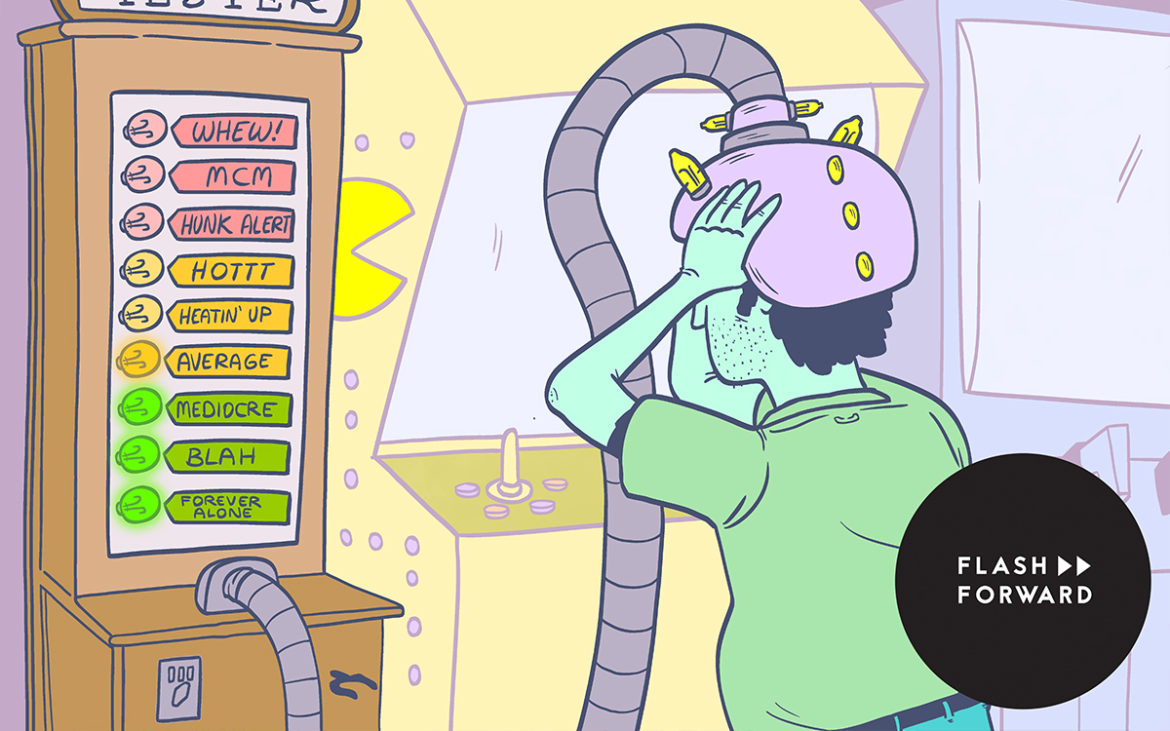
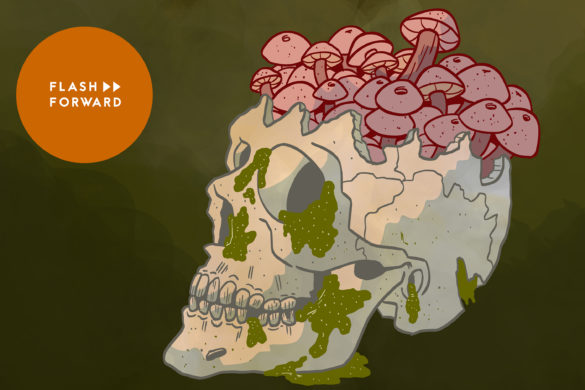
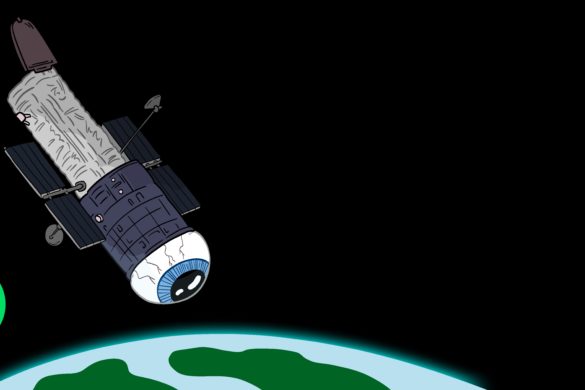
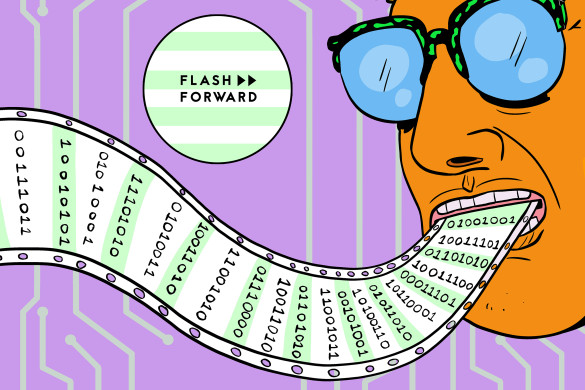
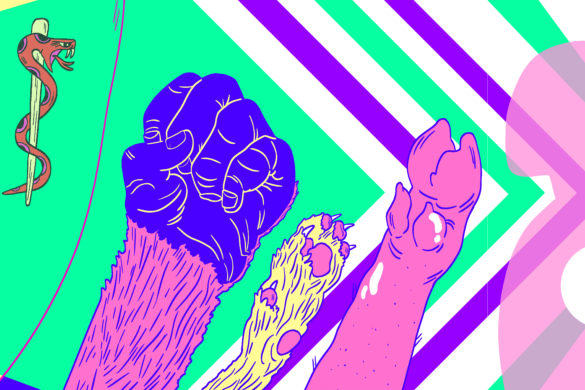
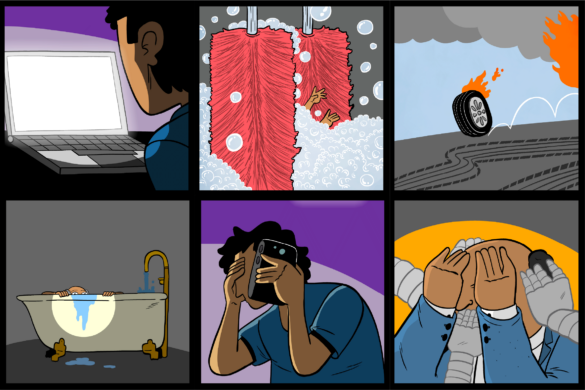
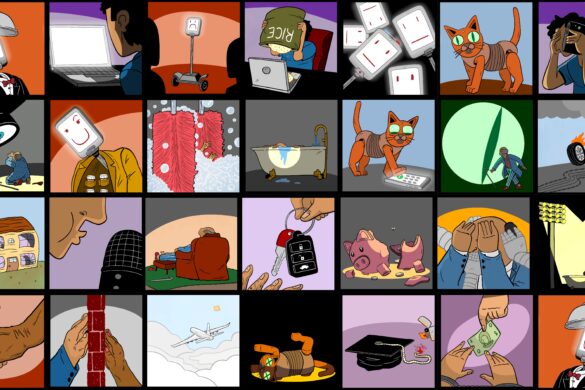
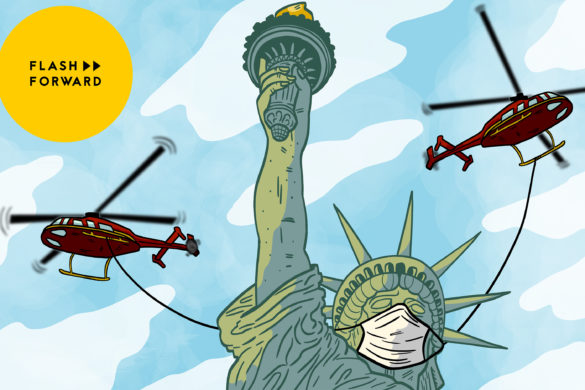
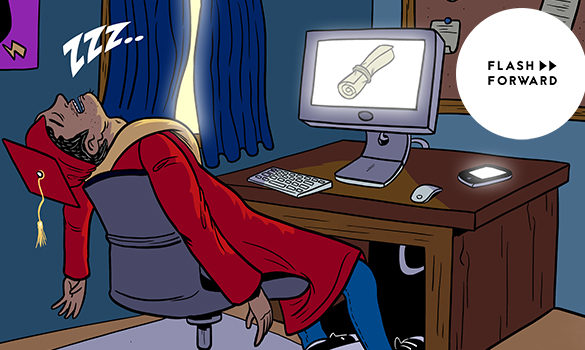
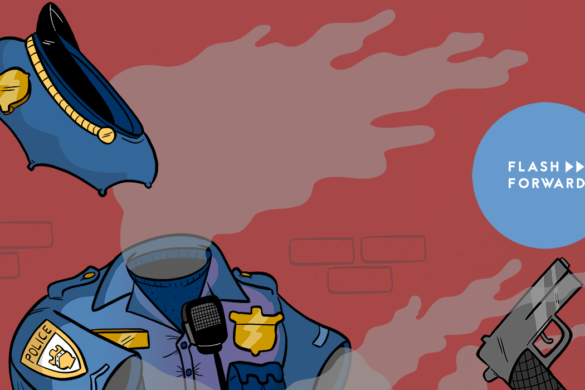
5 comments
I’m thinking about how this idea might play out in the area of employment. Employers talk about the difficulty finding a “good fit” with prospective employees. Candidates complain about the protracted hiring process, going through multiple hoops and endless waits to find out whether they are the “right” person for the job. And even then it doesn’t always work out: witness the epidemic of toxic employees and bosses from hell. Also, “incompatibility” can be hidden shorthand for race/age/gender discrimination. From the viewpoint of an employer or a candidate, I’d be all for a NeurAlign interview–after, of course, meeting the basic qualifications for performing the job.
[…] Visit a future where machines make couples fall in love faster: Our NeurAlign invention is the subject of the excellent podcast Flash Forward, where host Rose Eveleth interviews us, and asks experts (a neuroscientist-artist and a dating podcaster) how feasible this future really is. The burning question: Would you try it? LISTEN HERE […]
I’m unable to pay this episode in my podcast addict which gets the feed from http://fastforwardpod.com/feed/podcast
Did the file format change?
Hi James,
Interesting, it shouldn’t have changed at all. Let me look into it!
I find it interesting, if a bit repulsive, that the idea of compatibility has become so entangled with the idea of likemindedness. When I was a kid, I hated my sister because we were too much alike. Likewise, what I love about my wife is her strength in the areas I am weak, and how I can be the inverse for her. The proposed app would have me date my sister and never again see my wife.
It’s even more horrifying in the employment example Amy offers above. How long would a company survive with nothing but yes men in it’s employ? If such a company ever had anything above base-level success, it would only be by accident. In my experience, more companies thrive in spite of their management than because of it.
Discomfort is the part of love & life that makes comfort satisfying. Without the stress, all else is bland mediocrity.